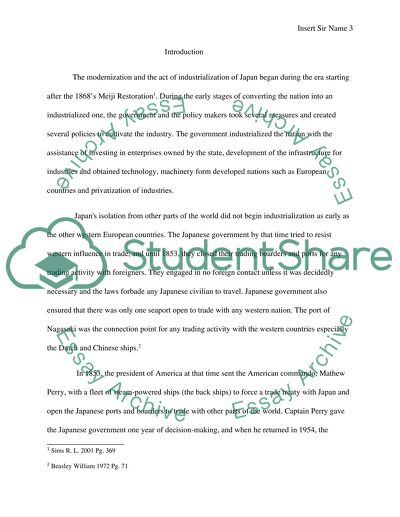Cite this document
(“Meiji Era (1868-1912) Essay Example | Topics and Well Written Essays - 3750 words”, n.d.)
Meiji Era (1868-1912) Essay Example | Topics and Well Written Essays - 3750 words. Retrieved from https://studentshare.org/history/1402479-meiji-era
Meiji Era (1868-1912) Essay Example | Topics and Well Written Essays - 3750 words. Retrieved from https://studentshare.org/history/1402479-meiji-era
(Meiji Era (1868-1912) Essay Example | Topics and Well Written Essays - 3750 Words)
Meiji Era (1868-1912) Essay Example | Topics and Well Written Essays - 3750 Words. https://studentshare.org/history/1402479-meiji-era.
Meiji Era (1868-1912) Essay Example | Topics and Well Written Essays - 3750 Words. https://studentshare.org/history/1402479-meiji-era.
“Meiji Era (1868-1912) Essay Example | Topics and Well Written Essays - 3750 Words”, n.d. https://studentshare.org/history/1402479-meiji-era.


